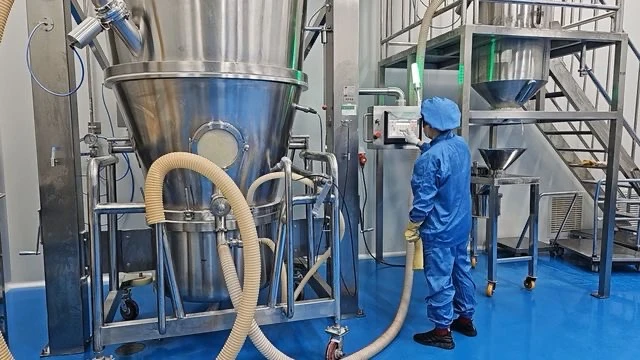- Afrikaans
- Albanian
- Amharic
- Arabic
- Armenian
- Azerbaijani
- Basque
- Belarusian
- Bengali
- Bosnian
- Bulgarian
- Catalan
- Cebuano
- Corsican
- Croatian
- Czech
- Danish
- Dutch
- English
- Esperanto
- Estonian
- Finnish
- French
- Frisian
- Galician
- Georgian
- German
- Greek
- Gujarati
- Haitian Creole
- hausa
- hawaiian
- Hebrew
- Hindi
- Miao
- Hungarian
- Icelandic
- igbo
- Indonesian
- irish
- Italian
- Japanese
- Javanese
- Kannada
- kazakh
- Khmer
- Rwandese
- Korean
- Kurdish
- Kyrgyz
- Lao
- Latin
- Latvian
- Lithuanian
- Luxembourgish
- Macedonian
- Malgashi
- Malay
- Malayalam
- Maltese
- Maori
- Marathi
- Mongolian
- Myanmar
- Nepali
- Norwegian
- Norwegian
- Occitan
- Pashto
- Persian
- Polish
- Portuguese
- Punjabi
- Romanian
- Russian
- Samoan
- Scottish Gaelic
- Serbian
- Sesotho
- Shona
- Sindhi
- Sinhala
- Slovak
- Slovenian
- Somali
- Spanish
- Sundanese
- Swahili
- Swedish
- Tagalog
- Tajik
- Tamil
- Tatar
- Telugu
- Thai
- Turkish
- Turkmen
- Ukrainian
- Urdu
- Uighur
- Uzbek
- Vietnamese
- Welsh
- Bantu
- Yiddish
- Yoruba
- Zulu
12月 . 16, 2024 09:32 Back to list
sulfaquinoxaline sodium
Understanding Sulfaquinoxaline Sodium An Important Antimicrobial Agent
Sulfaquinoxaline sodium is a member of the sulfonamide class of antibiotics that is primarily used in veterinary medicine. Its discovery and subsequent utilization underscore the critical role of antimicrobial agents in controlling infectious diseases in livestock and poultry. This article delves into the properties, uses, mode of action, and safety considerations related to sulfaquinoxaline sodium, shedding light on its significance in agriculture and animal health.
Chemical Composition and Properties
Sulfaquinoxaline sodium, chemically known as sodium 2-(5-quinoxalinyl sulfanilamide), is a white to light yellow crystalline powder. It is soluble in water, which facilitates its administration in liquid formulations. The structural composition of sulfaquinoxaline includes a sulfonamide group, which is responsible for its antibacterial properties. The compound acts by inhibiting bacterial growth, making it a potent agent against a variety of gram-positive and some gram-negative bacteria.
Mechanism of Action
The primary mechanism of action of sulfaquinoxaline sodium lies in its ability to inhibit the bacterial synthesis of folic acid. Folic acid is essential for the growth and multiplication of bacteria, as it serves as a precursor for nucleic acids. Sulfaquinoxaline competes with para-aminobenzoic acid (PABA), a key component in the folate synthesis pathway, thereby obstructing the production of folate and ultimately leading to bacterial cell death. It is noteworthy that sulfaquinoxaline is bacteriostatic rather than bactericidal; this means that while it inhibits growth, it does not directly kill the bacteria.
Applications in Veterinary Medicine
Sulfaquinoxaline sodium is predominantly utilized in treating and preventing bacterial infections in livestock and poultry. Common applications include the treatment of coccidiosis, a parasitic disease that significantly impacts the poultry industry. By controlling coccidial infections, sulfaquinoxaline contributes to better weight gain and overall health in chickens and other poultry species. In addition, it is employed in the treatment of respiratory infections in various livestock animals, ensuring that farms can maintain healthy populations.
sulfaquinoxaline sodium

Veterinarians appreciate the effectiveness of sulfaquinoxaline for its broad spectrum of action and the relative ease of administration, often given via drinking water or feed. This convenience makes it accessible for farmers managing large groups of animals.
Safety and Resistance Concerns
While sulfaquinoxaline sodium is effective, its use is not without controversy. The development of bacterial resistance is a significant and ongoing concern. Misuse or overuse of sulfonamides in veterinary practice can lead to the emergence of resistant strains of bacteria, which may subsequently pose a risk to both animal and human health. This situation necessitates prudent usage and adherence to withdrawal periods before animals are sent to market, ensuring that residues of the drug do not remain in the food supply.
Regulatory bodies, such as the Food and Drug Administration (FDA), have established guidelines and regulations surrounding the use of sulfaquinoxaline in food-producing animals. Compliance with these guidelines is critical to ensuring food safety and minimizing resistance development.
Conclusion
Sulfaquinoxaline sodium remains an important tool in the arsenal of veterinary medicine, particularly in the control of bacterial infections in livestock and poultry. Its ability to inhibit folic acid synthesis makes it effective against a variety of pathogens, contributing to the productivity and health of farm animals. However, the associated risks of resistance highlight the need for responsible use and adherence to regulatory guidelines. As the veterinary landscape evolves, ongoing research and monitoring will be essential to maintain the efficacy of sulfaquinoxaline sodium while safeguarding both animal health and public safety.
In summary, understanding the properties and implications of sulfaquinoxaline sodium is crucial for veterinarians, farmers, and regulators alike, ensuring its continued role in promoting animal health and agricultural productivity.
-
Guide to Oxytetracycline Injection
NewsMar.27,2025
-
Guide to Colistin Sulphate
NewsMar.27,2025
-
Gentamicin Sulfate: Uses, Price, And Key Information
NewsMar.27,2025
-
Enrofloxacin Injection: Uses, Price, And Supplier Information
NewsMar.27,2025
-
Dexamethasone Sodium Phosphate Injection: Uses, Price, And Key Information
NewsMar.27,2025
-
Albendazole Tablet: Uses, Dosage, Cost, And Key Information
NewsMar.27,2025













